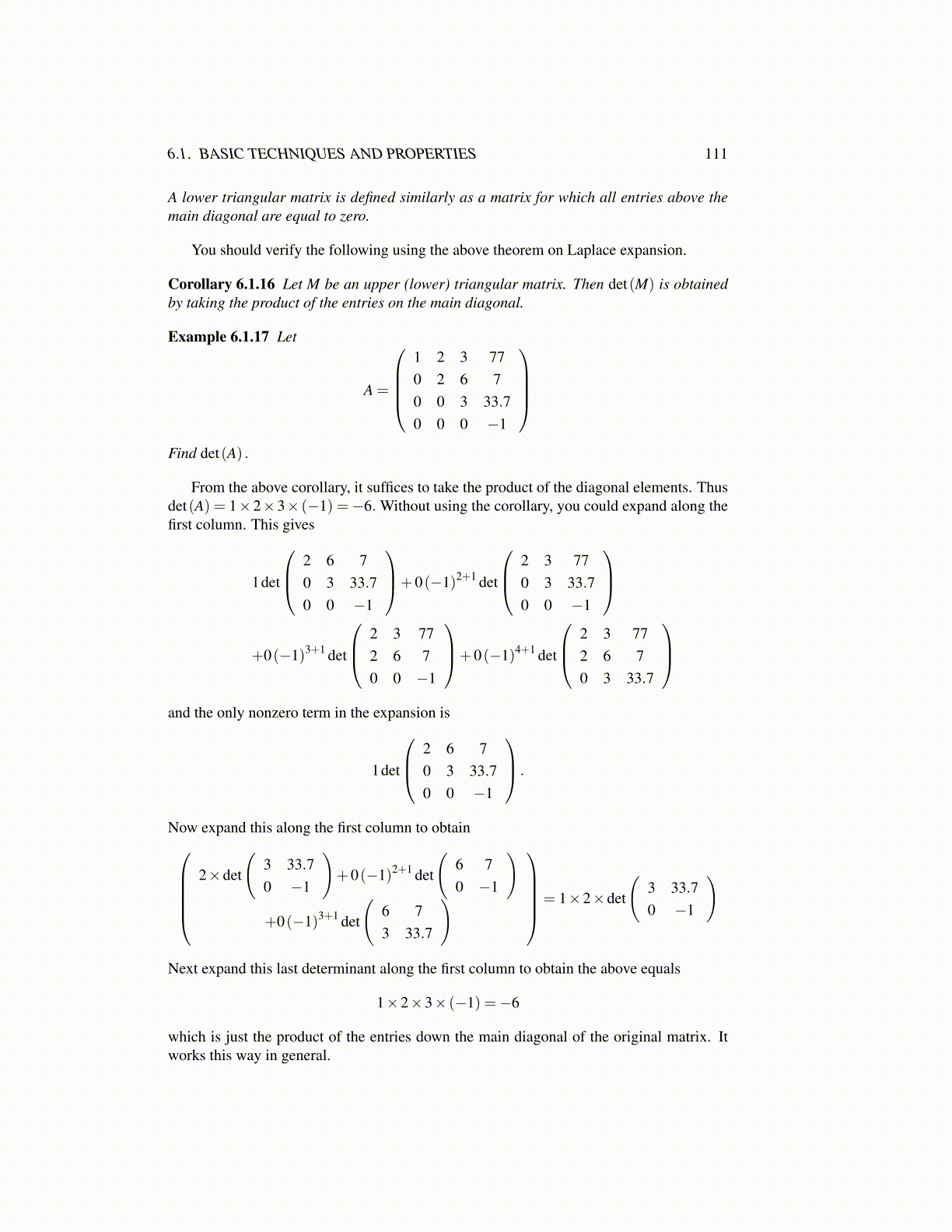
6.1. BASIC TECHNIQUES AND PROPERTIES 111
A lower triangular matrix is defined similarly as a matrix for which all entries above themain diagonal are equal to zero.
You should verify the following using the above theorem on Laplace expansion.
Corollary 6.1.16 Let M be an upper (lower) triangular matrix. Then det(M) is obtainedby taking the product of the entries on the main diagonal.
Example 6.1.17 Let
A =
1 2 3 770 2 6 70 0 3 33.70 0 0 −1
Find det(A) .
From the above corollary, it suffices to take the product of the diagonal elements. Thusdet(A) = 1×2×3× (−1) =−6. Without using the corollary, you could expand along thefirst column. This gives
1det
2 6 70 3 33.70 0 −1
+0(−1)2+1 det
2 3 770 3 33.70 0 −1
+0(−1)3+1 det
2 3 772 6 70 0 −1
+0(−1)4+1 det
2 3 772 6 70 3 33.7
and the only nonzero term in the expansion is
1det
2 6 70 3 33.70 0 −1
.
Now expand this along the first column to obtain2×det
(3 33.70 −1
)+0(−1)2+1 det
(6 70 −1
)
+0(−1)3+1 det
(6 73 33.7
)= 1×2×det
(3 33.70 −1
)
Next expand this last determinant along the first column to obtain the above equals
1×2×3× (−1) =−6
which is just the product of the entries down the main diagonal of the original matrix. Itworks this way in general.